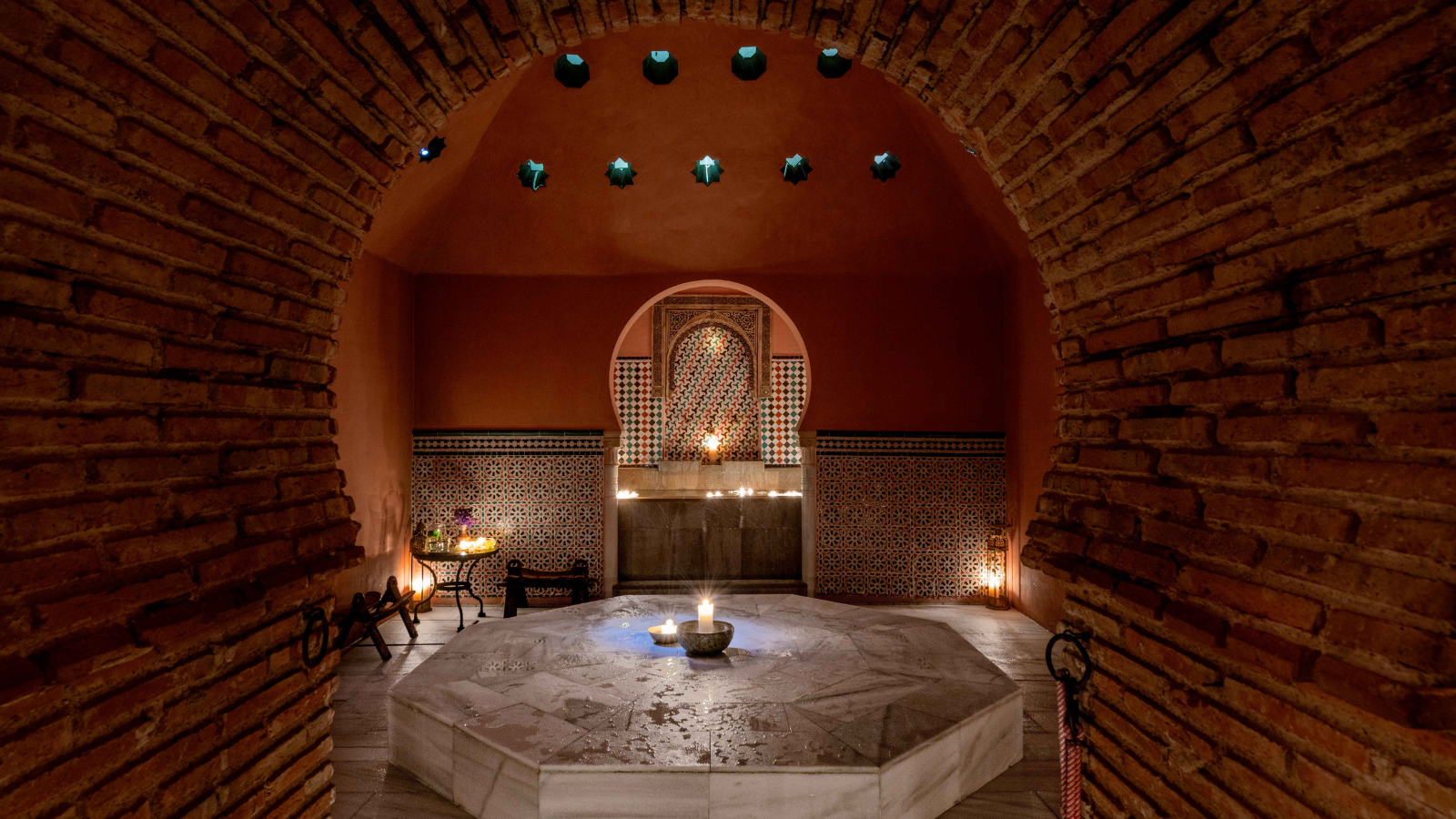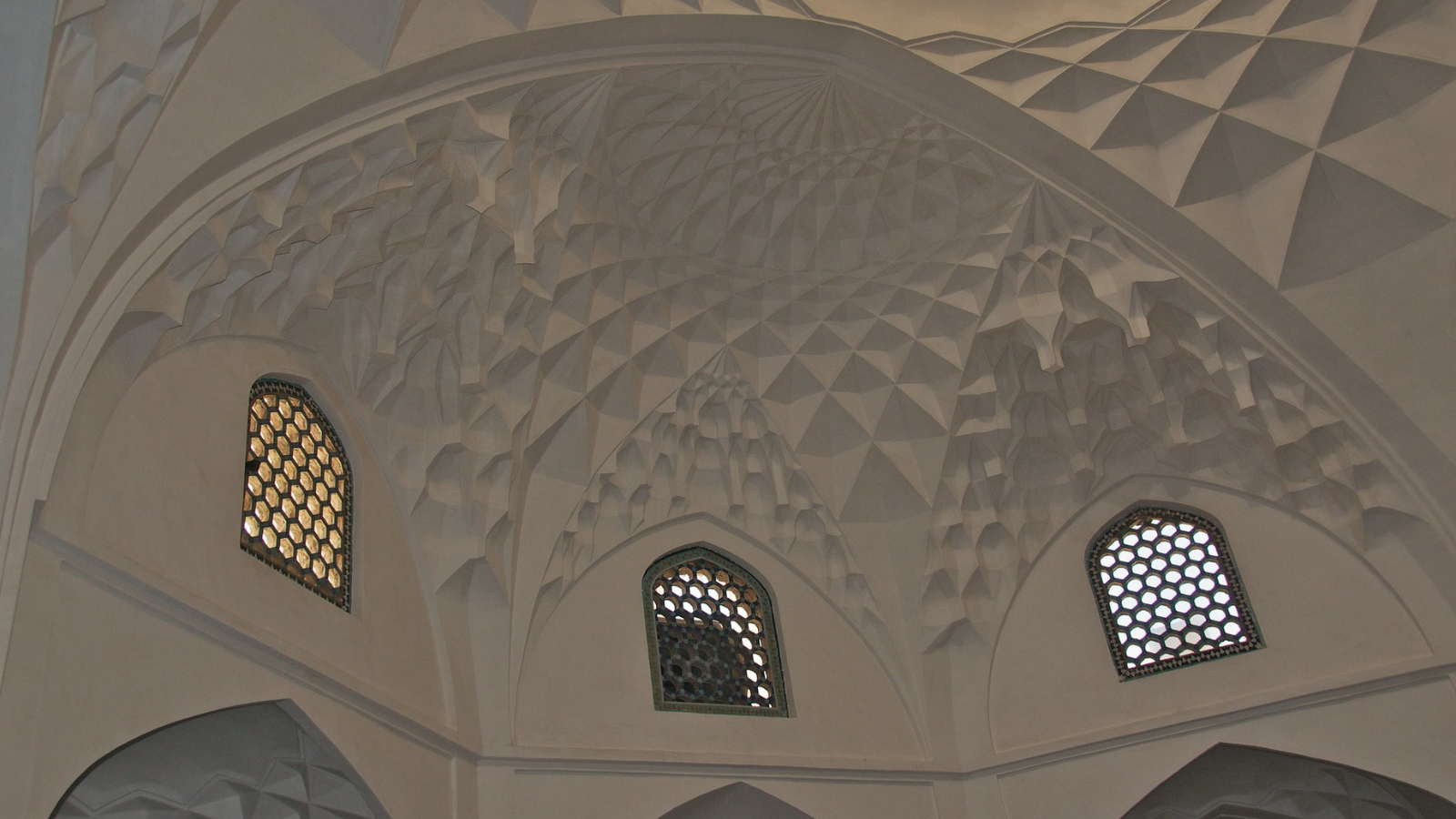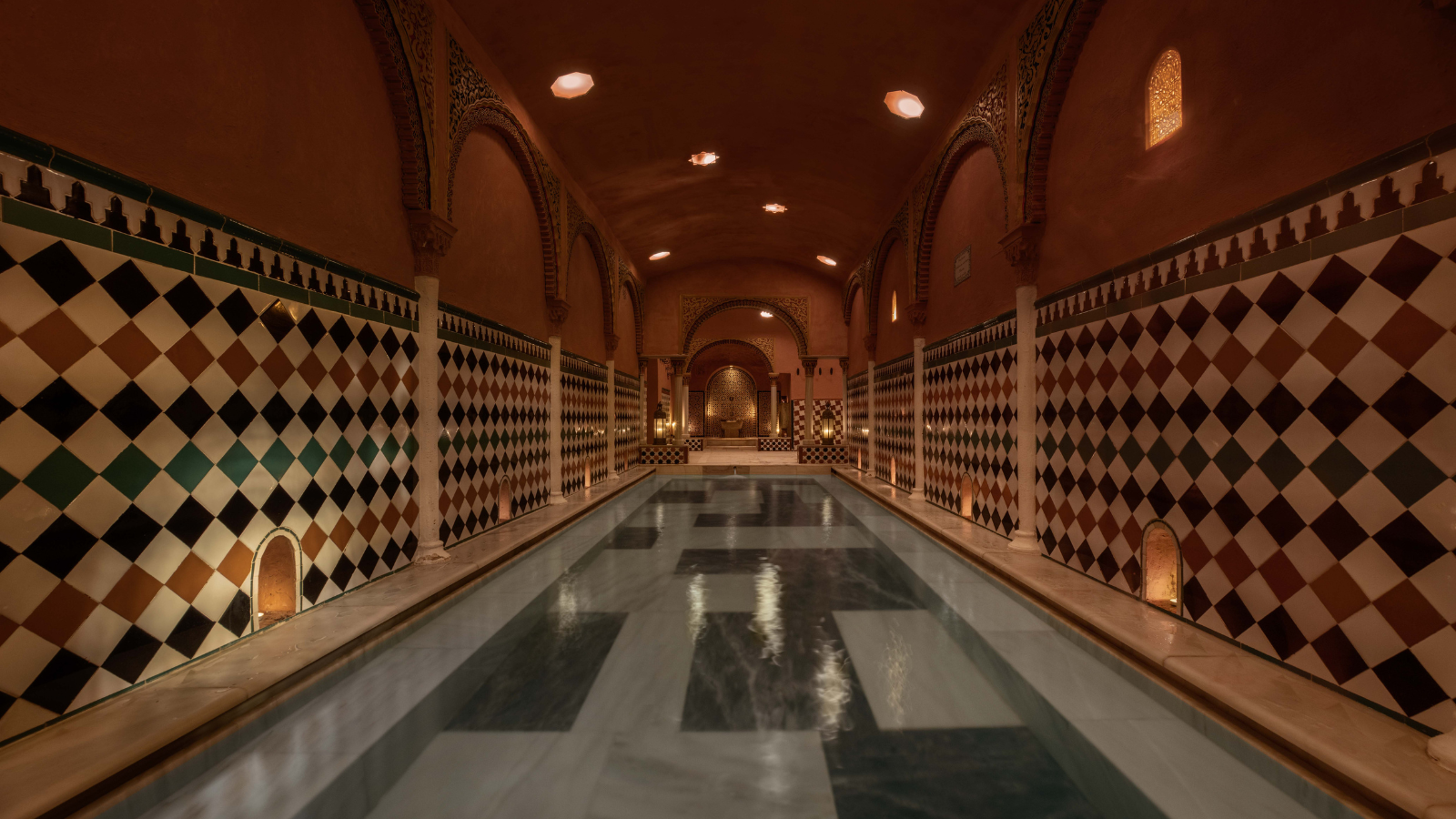Categorie
Media / Blog
TURKISH BATHS - ARCHITECTURE AND INFLUENCE
By Kimberly Hughes

The Turkish-style bath comprises what is arguably one of the most historically sophisticated and vibrant examples of bathing culture around the world. Known as hammam, which translates as “spreader of warmth”, Turkish baths have their origins in Roman thermae (bath complexes) and became rooted in Turkish society around 600 AD. They subsequently went on to spread throughout the Islamic world via the Ottoman Empire, often taking on subtly varying characteristics across different regions. In addition to bathing, these facilities have also served as a space for social interactions. They are often found close to mosques and are used for performing ritual ablutions prior to worship.

The baths, as a place for both physical and mental relaxation, are famed for their striking architectural features. These can include arches, inlaid marble, mosaic tiles, and domes with tiny windows through which sunlight filters—creating dramatic lighting effects that evoke an otherworldly atmosphere.
The bath houses typically comprise three distinct sections, each with different functions: one for changing clothes and relaxing with a refreshing beverage following the bathing ritual (the ‘cool’ area); another for bathing and receiving an optional scrub down from a bath attendant (the ‘warm’ area); and a third for steam bathing and massage treatments (the ‘hot’ area).
There are numerous locales around the world today to enjoy the resplendent experience of a Turkish bath—beginning, of course, in Istanbul, where there are around 60 hammam around the city in total. The Cagaloglu Hammam, built by Sultan Mahmud I, dates to 1741—and still stands in its original state today. It offers a stunning glimpse into Baroque Ottoman architecture, including an enormous marble pool with a fountain standing at its center.

In the Andalucian region of southern Spain, many modern bath houses recreate the rule of Islamic Moors between the 8th and 15th centuries. Hammam al Andalus in Granada is the singular local hammam that is set inside a remaining historical building. It features a low, stone-arched doorway leading into a courtyard bedecked with hanging plants, as well as pools lined with intricately decorative tiles, and a sweet mint tea served at the end of the service.
Near the Great Salt Desert in Kashan City, Iran, the Sultan Amir Ahmad Bathhouse, also known as the Qasemi Bathhouse, offers a tranquil atmosphere amidst an exquisite Persian-style architecture of stucco and limestone bas-relief. Constructed during the 16th century, its unique features include vibrantly glazed turquoise and gold tiles, an expansive octagonally-shaped hall with a pool and eight pillars, elaborate star-shaped patterning on the bathhouse ceiling, and a system of winding hallways designed to retain steam.
The Gellért Baths in Budapest, Hungary, built in 1918, combine thermal waters with an Art Nouveau aesthetic, including colorful mosaic and turquoise tiles and a stained-glass roof. Although this bath (like the Persian example above) is not technically a Turkish bath, it has adapted the concept of the hammam to local styles—while retaining its original aim to heal mind, body, and soul. It’s worth noting that the location attracted the attention of the Ottoman Turks during their 16th-century occupation of the region. Drawn by the natural hot springs and mineral pools, the Ottomans built a Turkish bath where the Gellért Baths now stand.
1. Hammam al Andalus, Granada, Spain
2. 17th-century public baths building in the bazaar at Kerman, Iran. “Under the Hammam Domes” by A. Davey is licensed under CC BY 2.0
3. Hammam al Andalus, Granada, Spain